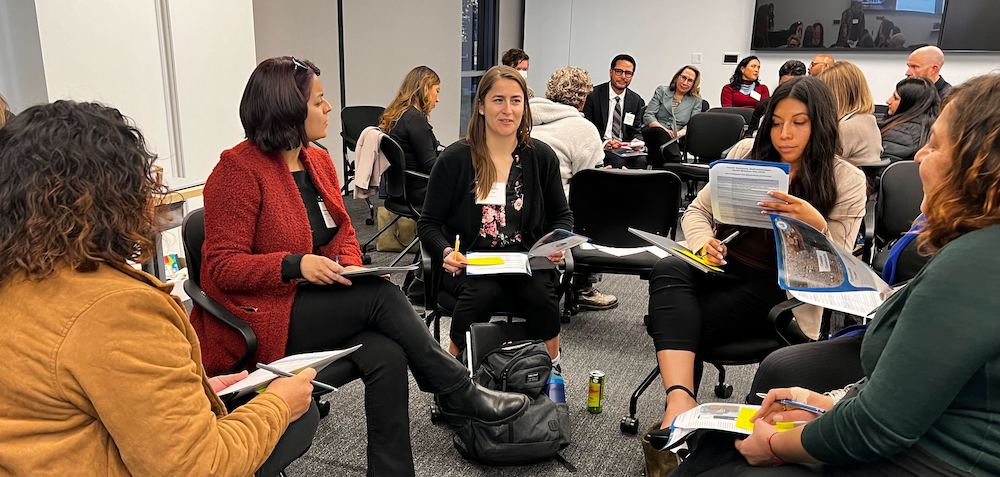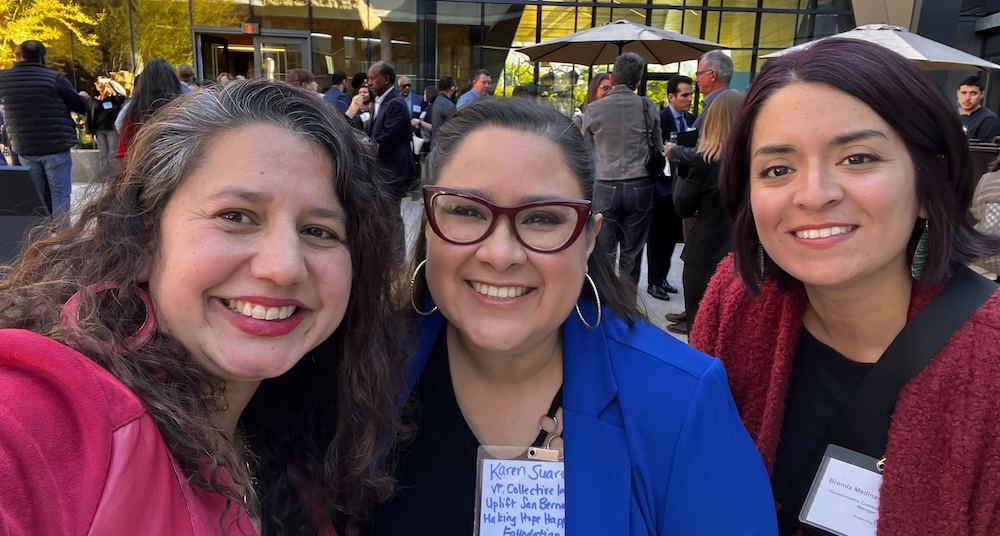Partnerships, Financing, and Technical Assistance: Climate Resilience for Disadvantaged Communities
Authored by Brenda Medina-Maldonado
The Inflation Reduction Act (IRA) provides a historic amount of funding opportunities for climate projects that either have opened or are in the process of opening to applicants. This $369 billion d will unlock access to capital for climate projects and empower disadvantaged communities across the U.S. However, small community-based organizations often do not have the knowledge and/or capacity to pursue these funds. Through various conversations I’ve had with these organizations, a common knowledge gap is the different types of financing mechanisms available for climate projects and the assistance that is available to local organizations to apply for and receive funding. To address this, more education is needed about what finance mechanics exist and how to use them.

Climate Financing
This year’s Climate Resilience Nexus conference, held at the California Air Resources Board in Riverside, California, brought together local government officials, financing institutions, community-based organizations, and entrepreneurs. During the Advancing California’s Resilient Future through Funding and Financing panel discussion, speakers with expertise in grants, loans, and impact financing, insurance, green bonds, the Greenhouse Gas Reduction Fund, and funding for tribes contributed to a powerful conversation on capital stack and its innovative ways to finance climate projects.

The panel discussion also highlighted the IRA’s significance in expanding public-private partnerships and reducing perceived risks to increase private investments in climate solutions at scale. Dream.Org’s Climate Finance Guide provides more information about the variety of financing mechanisms available through the IRA, like grants, prize competitions, cooperative agreements, rebates, loans, and tax credits.
Partnerships
Partnerships are key to seeking funding from the IRA as well as creating robust applications. There are many funding opportunities currently looking for stakeholders to collaborate across various sectors to ensure that projects receive diverse input. This was on full display during the Climate Resilience Nexus through the use of discussion groups and networking opportunities that encouraged cross-sector conversations to create new allyship amongst attendees. During breakout sessions example case studies were also provided so that attendees could work together to find solutions.

An example of a grant that requires this level of collaboration is the Environmental Protection Agency's (EPA) Community Change Grants. The grant requires a partnership between two community-based organizations or a partnership between a community-based organization and a local government, federally-recognized tribe, or an institution of higher education. The grant opened in late 2023 and is accepting applications on a rolling basis until November 21, 2024.
When choosing partners, it is important to evaluate the type of partners needed and the specific value and expertise the partners will bring to the project. Intermediate organizations can help bring leadership and guide the project forward when deciding to partner with organizations or agencies.
Technical Assistance
Under-resourced organizations are the most vulnerable and face the possibility of not being able to apply for IRA funding due to a lack of capacity. However, technical assistance provides a solution for under-resourced organizations seeking funding from the IRA. Technical assistance ranges from grant writing support to project management to data reporting. This supplemental, tailored support helps advance climate projects and ensures that funds are reaching disadvantaged communities. During the Climate Resilience Nexus conference, the Tools and Resources panel discussion highlighted existing tools and resources and helped participants to better understand how they can best support project development.
Some examples of this type of support are the EPA’s Thriving Communities Technical Assistance Centers (TCTACs). These centers offer training and other assistance to build capacity to navigate federal grant application systems, write strong grant proposals, and effectively manage grant funding. Each EPA region has an assigned TCTAC. Organizations interested in assistance are encouraged to contact the TCTAC in their EPA region.
An additional opportunity that provides more targeted technical assistance is available through the EPA for Community Change Grants. The Community Change Grant Technical Assistance opportunity provides support with grant applications, project planning and development, outreach and engagement, and general capacity building. Dream.Org’s Transformative Communities program is also a resource available for interested organizations to receive technical assistance support.
Closing Thoughts
These problems take time to solve. However, these are problems that are worth fighting for. The fast-paced and energetic work thus far in the climate justice space adds hope to the potential of more equitable community-led climate projects.

As demonstrated through conferences like Climate Resilience Nexus, there are a lot of folks at the federal, state, county, and community levels working to ensure that communities are ready to adapt to climate impacts like wildfires, drought, and heat. Resilience will look different for each community, however, the principles on how to use financing, partnerships, and technical assistance to empower communities are all vital pieces of the puzzle in creating equitable outcomes.
The work is challenging, but the dream of an equitable future is within reach. Dream.Org will keep working towards a more equitable, more sustainable future until all communities have access to the work and wealth opportunities that the green transition holds.
